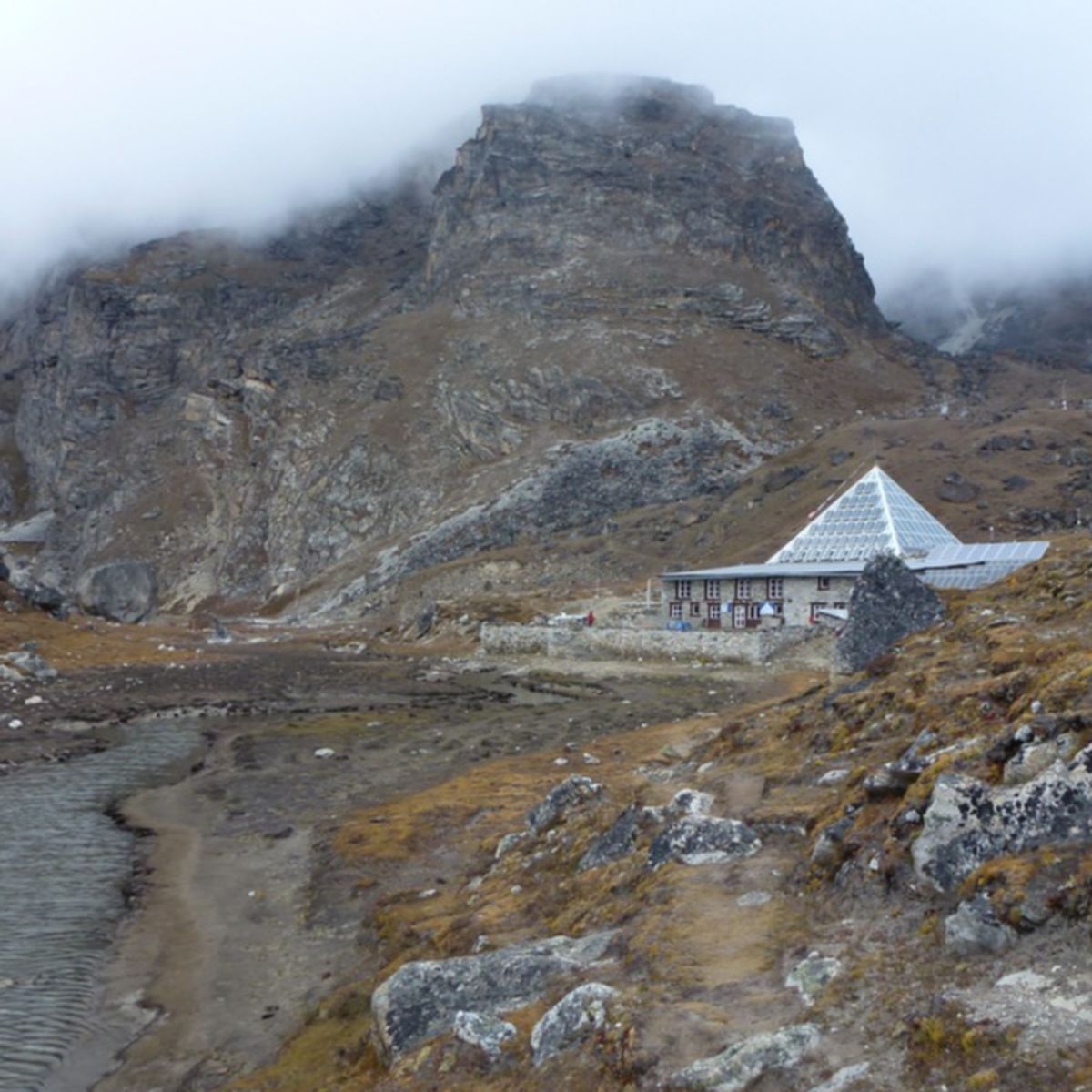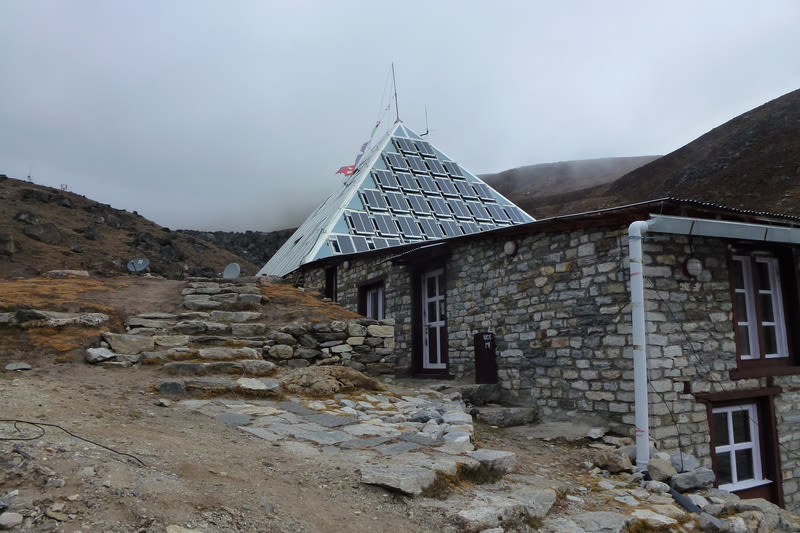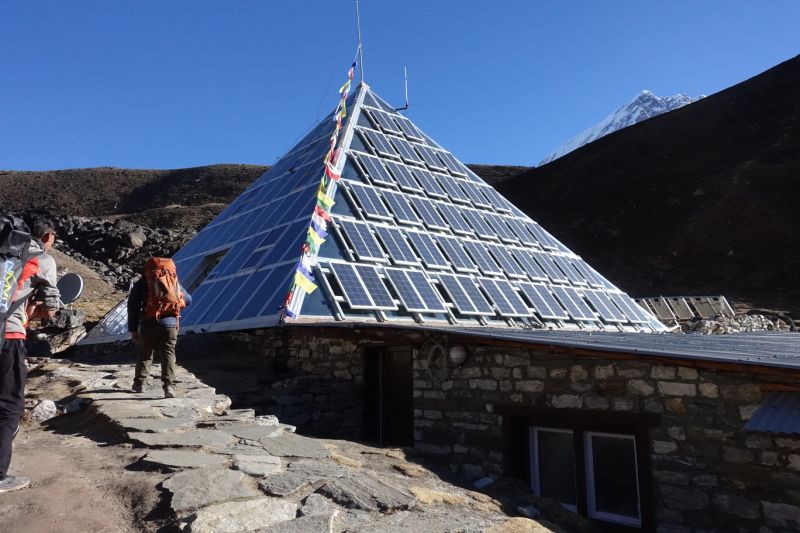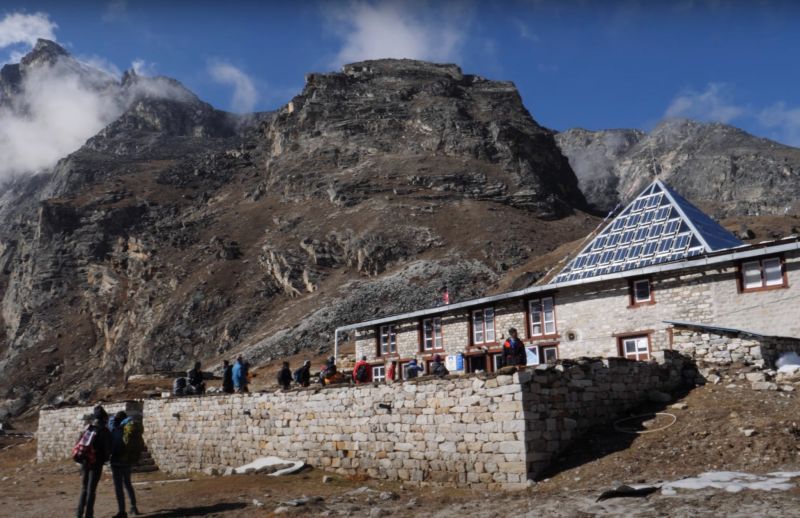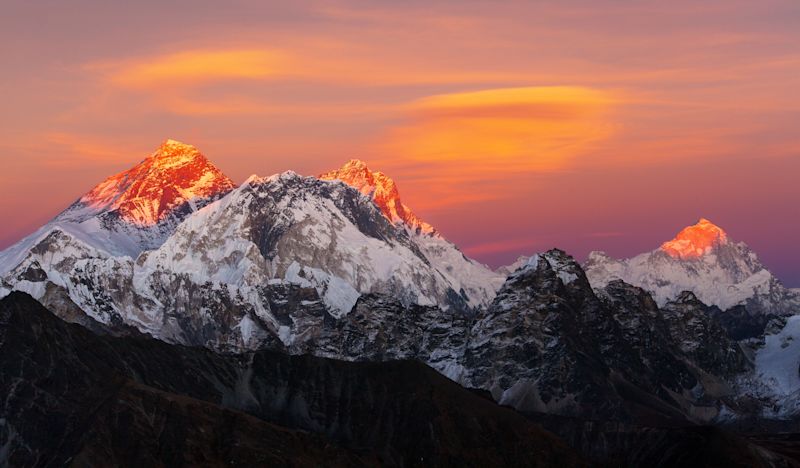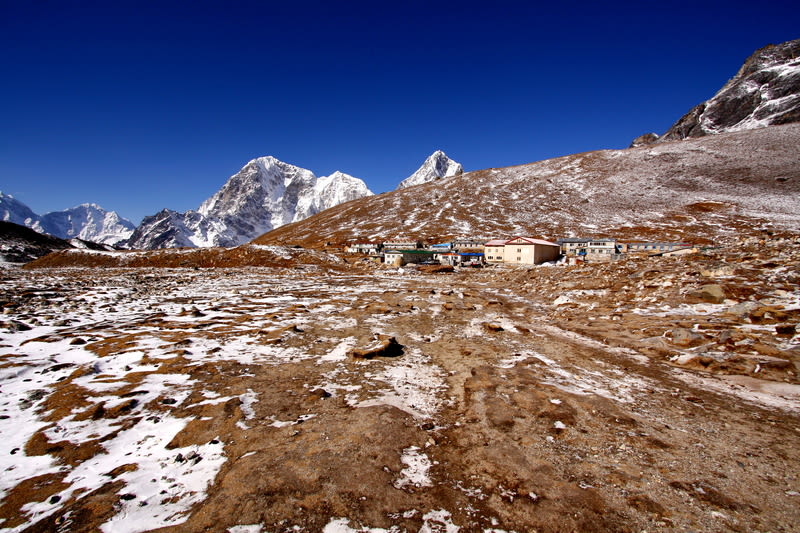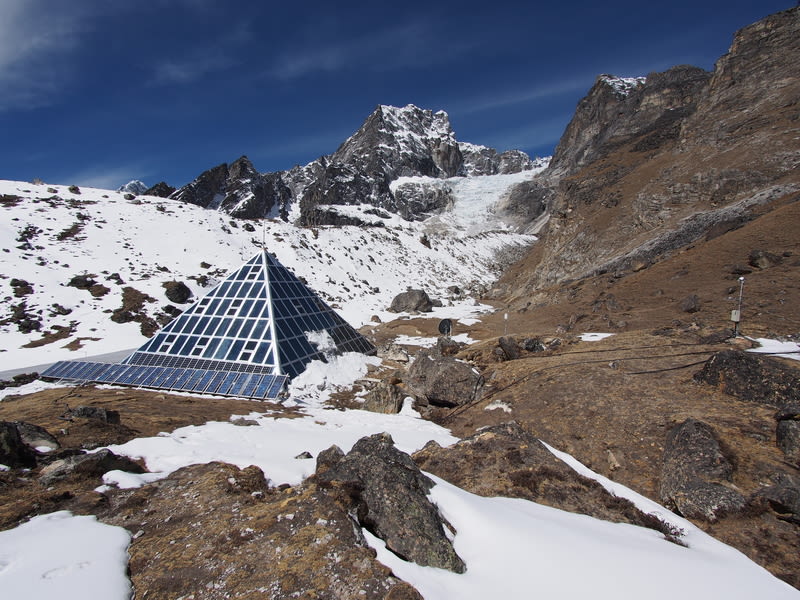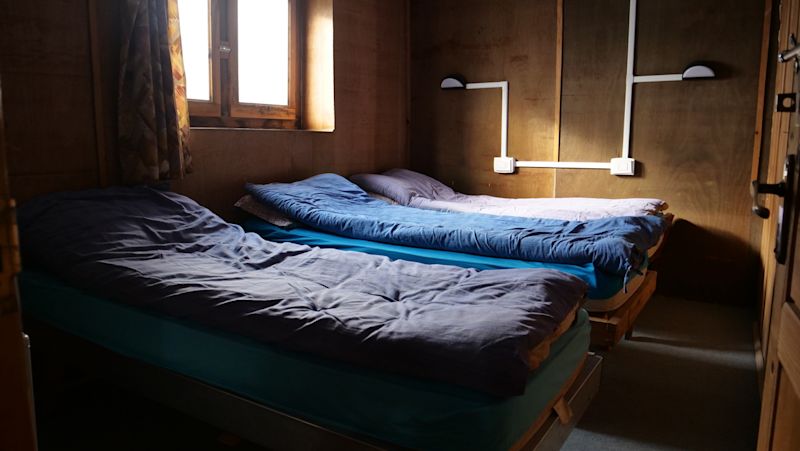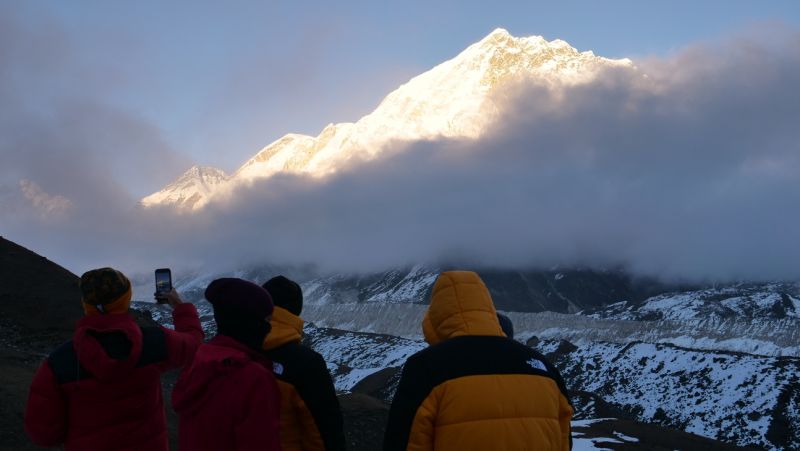What is the Pyramid?
The so-called Italian Pyramid is a multidisciplinary high altitude observatory and laboratory research centre. Part of the centre's raison d'être was to establish the scientific heights of Mt Everest and K2, and you can see that purpose reflected in its more formal name: Ev-K2-CNR.
The centre consists of a stone building and a pyramidal observatory
The Pyramid is a stone's throw from the Everest Base Camp trek route, making it possible for hikers of that route to visit it via a short detour.
The centre began life as a joint venture between the Italian and Nepali Governments, although the former no longer sponsors the site. It consists of a stone building as the base, and on top there's a transparent observatory shaped like an Egyptian pyramid (meaning it has a square base).
The Egyptian-style Pyramid is covered in solar panels
The centre has been used by various researchers over the past 30+ years to measure mountain elevations, glaciers, snow fields, earthquakes, temperatures, vegetation and more.
As is claimed on the Ev-K2-CNR's website:
To date, 520 scientific missions have been carried out there by 220 researchers from 143 different scientific institutions in several nations.
Brendan, our head videographer, took this snap when he visited the centre
Why was the Pyramid built?
The idea for the Pyramid began in the late 1980s after an American expedition claimed K2 was higher than Everest.
The Italian mountaineers Agostino Da Polenza and Prof. Ardito Desio wanted to determine the precise heights of the two mountains, and so Ev-K2-CNR came into being with the support of the Nepali Government and the Italian National Research Council.
The three-storey structure was opened in 1990 to host researchers as well as provide them with the equipment necessary to conduct environmental research.
Sunset over Mt Everest
We all know the outcome of that initial research question: Everest was certified as the tallest mountain in the world, currently standing at 8,849 m (29,032 ft). K2 can only claim second place, standing tall at 8,611 m (28,251 ft).
Gian Pietro Verza, who has been working at the station the entire time, reports that the station's data shows that Everest has actually risen by one metre since the centre was built and began collecting data. This won't surprise those of you who already knew that Everest is being pushed upward year on year.
You can see Verza introduce himself and the station in the video below.
Where is the Pyramid?
Ev-K2-CNR is tucked away in a small, tight, gorgeous valley just north of the hamlet of Lobuche, a popular stopover among trekkers heading to Everest Base Camp (EBC).
To reach the centre, you must hike there from nearby Lobuche (unless you're important enough to be flown in by helicopter). The pyramid is just over a kilometre from Lobuche (6,119 m), and it takes about 15 to 20 minutes to hike there. On most EBC trek itineraries, you spend a night in Lobuche, so you don't have to make a special plan to be in the vicinity of the pyramid.
The nearby hamlet of Lobuche
The research centre sits alongside a little stream at an altitude of 5,050 m (16,568 ft) above sea level, making it one of the highest permanent dwellings in the world.
There's nothing else in the valley beyond some robust nature, and so one feels well and truly remote when you visit here.
Seen from this angle, Ev-K2-CNR looks like a pyramid and nothing else
Can I stay at the Pyramid?
You can actually overnight at the research centre in the lodge in the base of the building. The money generated by hosting trekkers helps staff to keep the centre afloat.
A bedroom at the Pyramid
The amenities at the Pyramid are surprisingly good given the altitude and location.
In fact, there are even showers, unlike anywhere else in the region at this high altitude! The bedrooms are by far the best in the area. And you actually have plug points in the room – this is rare indeed. Most EBC trek lodgings have a communal plug point near reception.
The view from the hill alongside the Pyramid
If you're interested in trekking to Everest Base Camp, there are the four different routes you can trek to get there and back.
